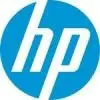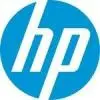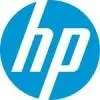
Overview
What is HPE Nimble Storage?
Nimble Storage was acquired by HPE in 2017. The enterprise flash array product line now goes by the name HPE Nimble Storage.
Positive Business Result Storage
Nimble Storage is easy to deploy in a secure and convenient way.
Nimble - Great at what it does.
All Flash in Hybrid Solution
It's not just Nimble it's agile too!
Jack Be Nimble
Great product
The best storage solution available if you have the budget
HPE Nimble boxes are a great choice for any organization, small or large.
Implementation of an HPE Nimble Hybrid Array for Backup/DR
Good performance, easy to manage.
Nimble Storage
Nimble Storage - Excellent choice
Nimble is the right fit for me and should be for you as well
Nimble, a breath of fresh air!
Popular Features
- Non-Intrusive Upgrades (11)9.898%
- Simplicity (11)9.696%
- Flash Array Performance (10)9.696%
- Data Compression (10)9.696%
Product Demos
HPE Nimble Storage dHCI - Adding a new server using Stack Manager
Managing HPE Nimble Storage using Stack Manager
Features
Enterprise Flash Array Storage
All-flash array storage is a solid state, high performance storage option.
- 9.6Flash Array Performance(10) Ratings
Solid state flash arrays offer high speed compared to hard-disk drives
- 9.7Flash Array Integration(9) Ratings
Integration with hypervisors and applications
- 9.6Data Compression(10) Ratings
Flash Arrays include compression and deduplication features to reduce storage requirements
- 9.8Non-Intrusive Upgrades(11) Ratings
Software upgrades are often seamless with no performance tuning required
- 9.6Simplicity(11) Ratings
Flash arrays should be simple to use and require little training
- 9Power Savings(10) Ratings
Flash arrays use significantly less power than hard-disk drives
Product Details
- About
- Tech Details
- FAQs
What is HPE Nimble Storage?
HPE Nimble Storage Technical Details
| Operating Systems | Unspecified |
|---|---|
| Mobile Application | No |
Frequently Asked Questions
Comparisons
Compare with
Reviews and Ratings
(66)Community Insights
- Business Problems Solved
- Pros
- Cons
- Recommendations
Users have found several key use cases for HPE Nimble Hybrid storage. One common use case is offloading non-production data from their all-flash storage, resulting in cost reduction while maintaining the same level of performance. Another use case is using HPE Nimble Storage for primary and disaster recovery VMware datastores, allowing for quick and easy failover in case of a production site failure. Users have also reported that the Nimble storage device serves as the primary source of network-based storage, providing improved ease of management and performance compared to previous storage devices. Additionally, Nimble CS210 storage units have been used across organizations to enable snapshot backups and cross replication for disaster recovery. Overall, users have experienced improved performance, ease of management, and cost savings by utilizing HPE Nimble Hybrid storage for various use cases in their environments.
Intuitive User Interface: Users have praised the intuitive and user-friendly interface of Nimble Storage. They find it easy to navigate and manage the storage system, without requiring extensive training or technical expertise. The simplicity of the GUI-based interface has been specifically highlighted as a major advantage.
Excellent Customer Service: Nimble Storage's customer service and technical support have received high praise from users. Reviewers appreciate the knowledge and responsiveness of the support engineers who provide prompt assistance in resolving issues effectively. The proactive support approach, where Nimble reaches out to users before they even report an issue, has been particularly appreciated.
High Performance: Users commend the impressive performance of Nimble Storage. The all-flash storage system is described as exceptionally fast, with instant completion of storage operations. This high performance, combined with low latency, proves advantageous for applications that demand intense I/O operations.
Customization of Reports: Some users have expressed the need for an option to customize reports based on their specific customer needs. They feel that having this capability would greatly enhance their experience with the product.
Mapping Hosts in Storage: Several reviewers have found mapping HOSTS in the storage to be a tedious task, especially when there are more than 100 Hosts involved. This process can become time-consuming and complex, leading to frustration among users.
Lack of CLI Script Customization: Users desire custom CLI scripts to automate day-to-day activities but feel that the current options are not sufficient for their needs. They believe that having the ability to create and customize CLI scripts would improve efficiency and streamline their workflow.
Users commonly recommend the following when it comes to HPE Nimble Storage:
- Attend free training classes to learn about storage setup and configuration.
- Leverage a trusted Value Added Reseller for a successful implementation.
- Use sizing tools to appropriately size the environment.
Users find HPE Nimble Storage easy to implement and praise the support staff. They believe that it is a cost-effective solution with world-class customer support. Additionally, many users highly recommend choosing HPE Nimble Storage over other competitors if budget allows, as they consider it a well-put-together product at a great purchase price.
Attribute Ratings
Reviews
(1-2 of 2)Nimble Storage - Excellent choice
- GUI based interface for ease of management
- No downtime for firmware/software upgrades
- Integration with other vendors such as Veeam for backups and disaster recovery
- I'd like the GUI to include more information for some of the features such as replication data totals each night. You have to go to the command line for this.
- It would be nice to have a feature built into the GUI that would show you the command line equivalent to get the same results you are seeing in the GUI.
- Although the intial setup was easy, they could always improve on that portion. During my setup, I did have to do a lot of back and forth with research on their site as to what each setting was that I was setting up. They could have provided some sort of description for each field within the setup that would have made it easier to know what they were having us set up.
- We've had to spend less time managing the product daily due to its ease of use within the GUI.
- Upgrades are easier so there is less research to be done ahead of time compared to our last product.
- Nimble came in quite a bit cheaper than other competitors when we upgraded our storage environment.
Nimble SAN revew
- The data available from the dashboard/UI is really great.
- Nimble's tech support, not only for their product directly but also digging well into VMWare and working with VMWare tech support on one particularly difficult problem was impressive. They didn't draw a line and begin to ask that we contact another vendor.
- The performance is really quite good. While our applications don't push the array at all, I was able to drive impressive IOPS using SQLIO. The numbers were particularly impressive considering ours is 1GB iSCSI.
- One of our arrays has had no hardware failures at all while the other has had a failed power supply and controller. Both caused alerts to be generated and Nimble contacted us to ship the replacement components, so I suppose that's a weakness and strength in one.
- While compression is a great thing, it does cause some confusion in terms of capacity when looking at vCenter and the Nimble web based UI. Somewhere between thin provisioning, multiple VMs per partition and compression, I sometimes find it difficult to know exactly where one might be tight on space.
- In our environment the financial impact is really in terms of time we don't spend managing the storage. Nimble gives us quick access to useful information allowing us to focus on the servers, applications and networks.
- As stated before, our applications don't cause our Nimble arrays to begin to sweat, but if our application environment becomes more demanding, we have lots of headroom which should eliminate the need to move to another platform.
- Compellent and EqualLogic




